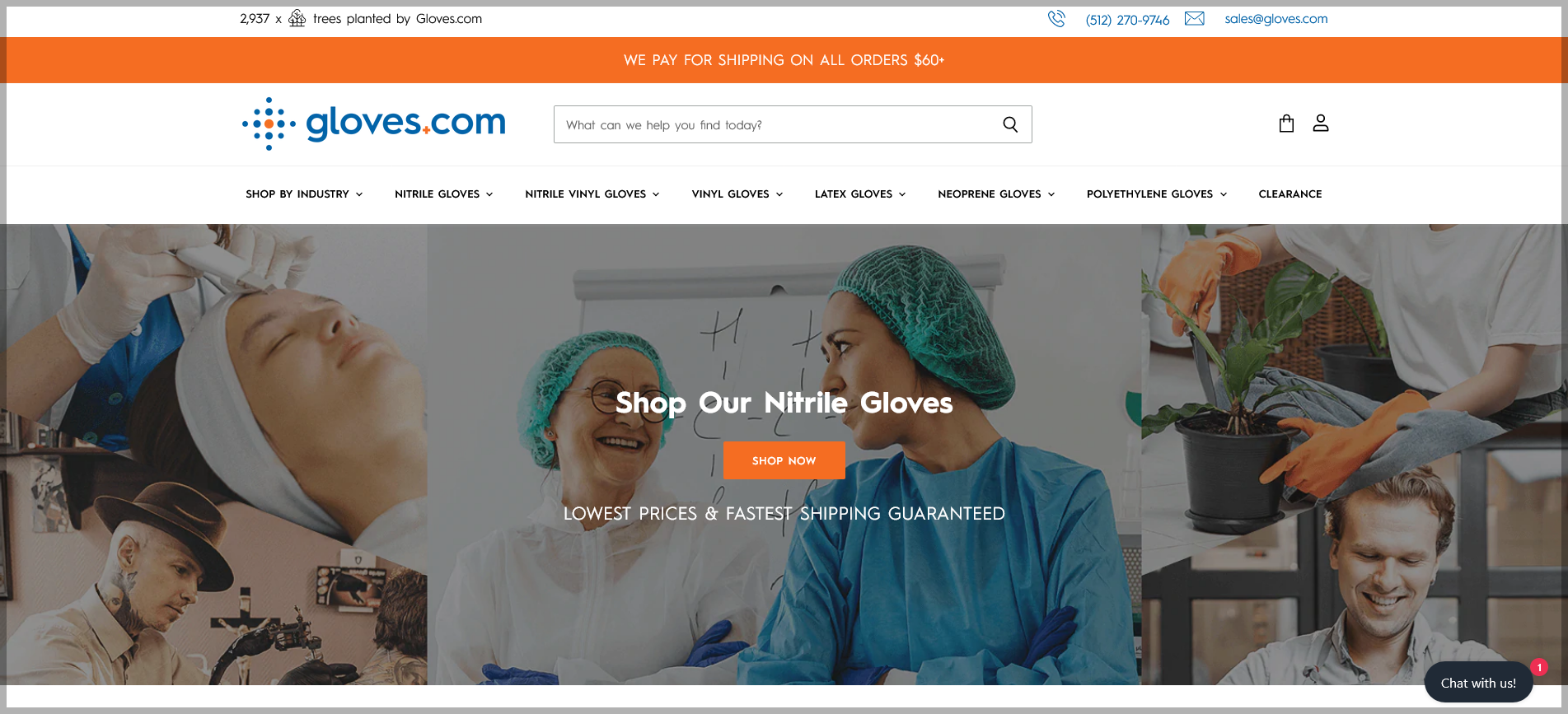SEO STRATEGY
Using our SEO Playbook to build organic traffic.
In this case study we’ll be sharing exactly how we increased Gloves.com’s monthly organic traffic from 0 to 50,000 in 12 months.
We’ve used these same techniques on 100’s of other Commerce stores to achieve very similar results. And by the end of this case study, you’ll be well equipped to implement the same SEO techniques on your eCommerce store.
In this case study I’m going to show you exactly what we did to take Gloves.com from 0 to 50,000 monthly organic visitors.
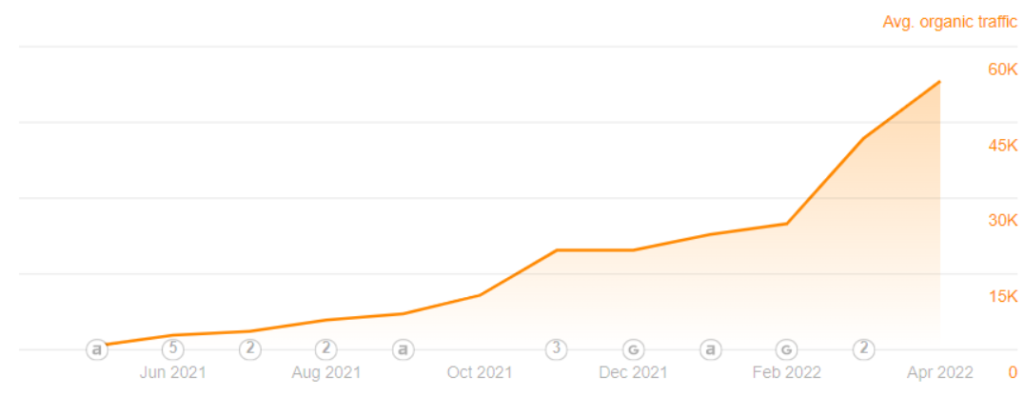
At 180 Marketing we only do eCommerce SEO, and have a proven method to help eCommerce sites achieve drastically more organic search traffic in a relatively short amount of time.

This is the exact process we went through with Gloves.com, so let’s dive into each stage in more detail.
Step 1 – Discovery
We first worked with Gloves.com to identify the main SEO obstacles and opportunities during the discovery call. The main goal was to uncover a few things:
- How much search volume and SEO opportunity is there for their target keywords?
- How competitive is the market?
- And most importantly, how feasible is the SEO project and what are the expected outcomes?
We did some preliminary analysis to answer all of these questions by looking at their target keywords.
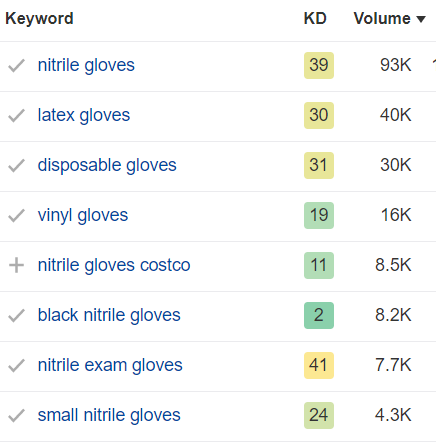
As it turns out, there were 10,000’s of people searching for keywords related to disposable gloves each month, so there was plenty of search opportunity.
The KD scores (Keyword Difficulty) were also moderate to low, meaning the competition wasn’t too stiff.
So overall, the project appeared to be feasible and we were confident we could deliver a successful SEO campaign with a positive ROI. The next step was to put together the actual SEO Strategy.
Step 2 – SEO Strategy
We spent a week analyzing the website, keyword space, and competitors to build a complete SEO strategy for Gloves.com. Here’s what the completed SEO plan for Gloves.com looked like.
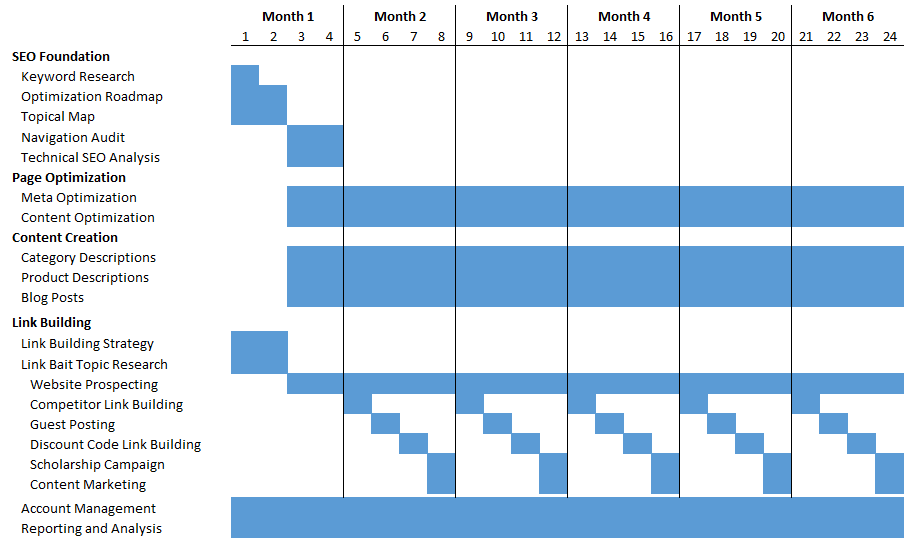
Basically once the foundational SEO items were out of the way, we would focus on page optimization, content creation, and link building each month on an ongoing basis.
Step 3 – SEO Foundation
With the SEO Strategy in place, the next part of the plan was to build the SEO foundation for the website. There were a few initiatives we put in place to achieve this and set up the website for success.
- Keyword Research
- Optimization Roadmap
- Topical Map
- Navigation Audit
- Technical SEO Analysis
Keyword Research
The first step was to identify all the keywords that would be targeted throughout the SEO campaign. There are 3 factors that go into a great keyword.
- High search volume – We only wanted keywords that were actively being search every month
- Low competition – Keywords that had lower competition and were easier to rank for were given high priority
- Search intent – We specifically looked for keywords where the intent behind the keyword was to make a purchase (ie. “blue disposable gloves” vs “what are disposable gloves”)
“I make this mistake often, thinking ‘how do I focus on the highest ranking keywords?’ And I think everyone does that. But these should be supplemented with longer-tail keywords. Yes, they’ll have lower traffic, but they’ll typically have higher conversion rates and clickthrough rates,”
– Shakil Prasla, founder of Gloves.com

Optimization Roadmap
We took all the keywords and grouped similar keywords together to start building the website’s Optimization Roadmap. This was essentially the blueprint of the SEO campaign and clearly outlined which keywords would be targeted on which pages.
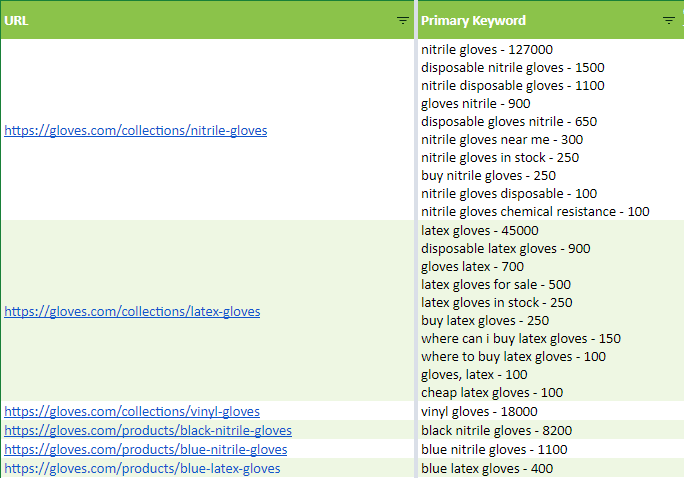
Through this process we were able to identify 94 pages that Gloves.com needed to create in order to properly target all the relevant keywords with transactional intent.
Topical Map
The Keyword Research and Optimization Roadmap processes helped identify and target transactional keywords (those where the searcher is looking to make a purchase). But we didn’t want to forget about informational keywords that could make for great blog posts and help educate customers.
After extensive keyword research we were able to identify dozens of informational keywords that could be leveraged for blog posts.
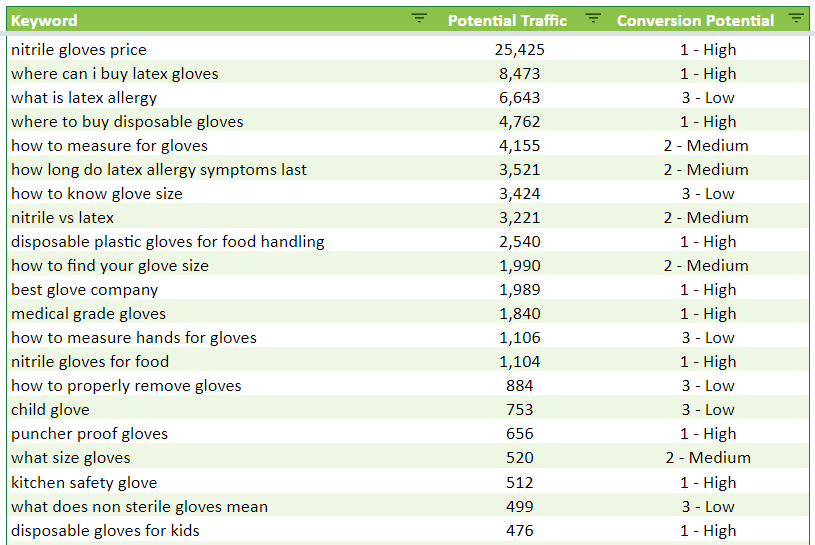
Navigation Audit
We wanted to use actual keyword data to determine which pages should be listed in the top navigation. So we took the findings from the Keyword Research and Optimization Roadmap to build the top navigation around the pages that customers were most searching for.

The end result was a top navigation that was optimized for search engines, but also included pages that customers were looking for most.
Technical SEO Analysis
The last step of the SEO Foundation phase was to do a deep-dive technical audit on the staging website that was currently being built. Our team crawled the entire website to identify any issues that could impact the crawling, indexing, and ranking of the website.
We were able to uncover quite a few issues and opportunities that if resolved could lead to improved rankings. Here’s an example of some of the technical SEO issues that were uncovered.
- Not enough content on key pages
- Multiple <h1> tags
- URLs not optimized
- Product thumbnails not using alt text
- Site speed issues
- Structured data not setup properly
Step 4 – Page Optimization
Now that the website’s SEO foundation was set, it was time to start optimizing our key pages. This is where the Optimization Roadmap really came into play. We already had a list of pages that needed to be optimized, all that was left was to start optimizing them.
There were 2 main ways we attacked the page optimization:
Meta Optimization
We optimized the title tag, meta description, and header tags to make sure they included our target keywords. Just by including your target keyword in these HTML elements can have a significant impact on keyword rankings.

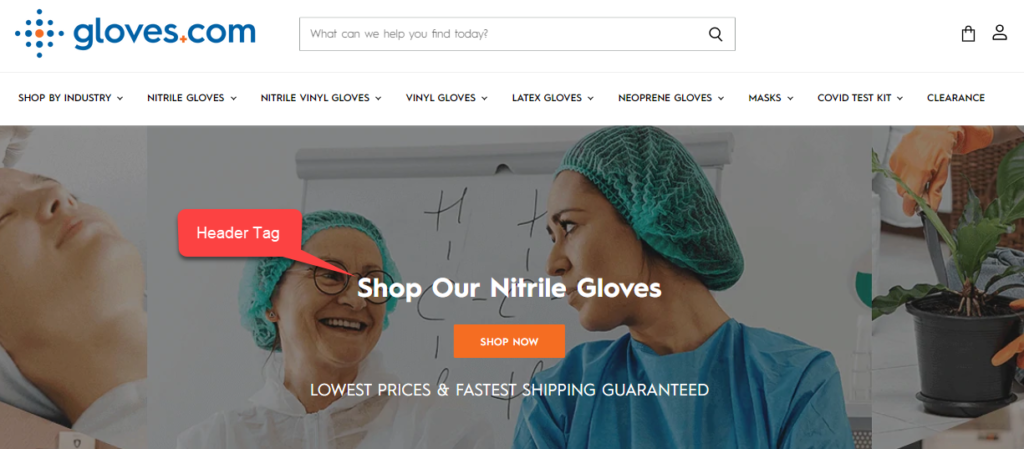
Content Optimization
The next step was to optimize the content so that it included…
- Our primary keywords
- Semantically related keywords
Just including your target keywords in the content isn’t enough. Google is also looking for related keywords to ensure your content is comprehensive.
We achieved this by using Surfer SEO to see what keywords the top ranking competitors were using in their content. We then revised the content to include these semantically related keywords.
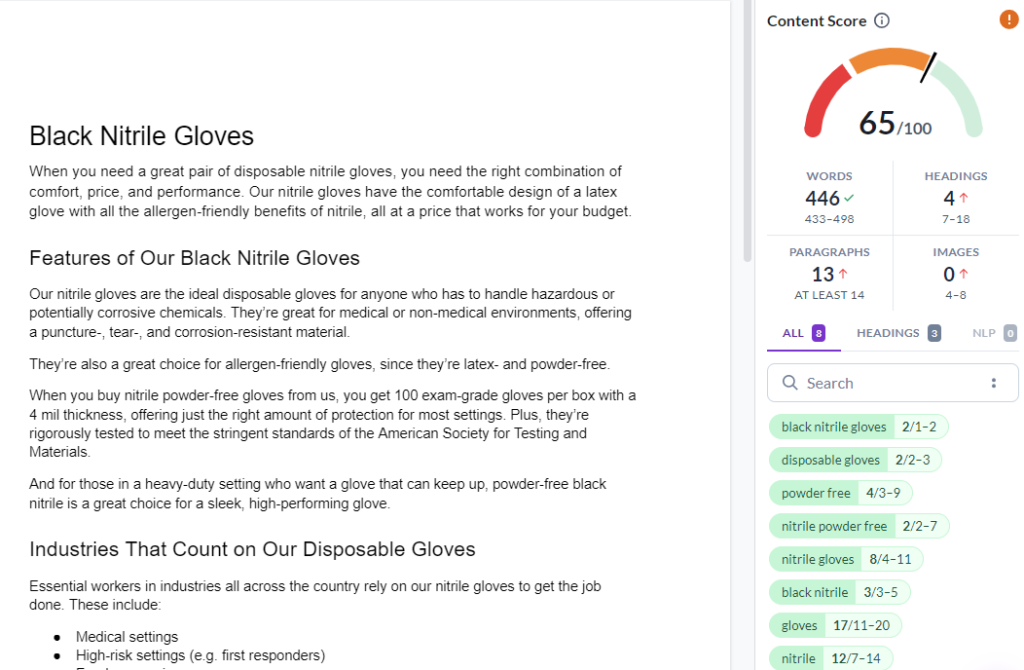
Step 5 – Content Creation
The content creation efforts were split between transactional pages (product and category pages) and informational pages (blog posts).
Transactional Pages
Transactional pages, typically category and product pages, are pages on the website where the primary user intent is to make a purchase. It’s important that these pages contain unique descriptions since search engines rely on text-based content to better understand what the page is about.
To achieve this we made sure all product and category pages had at least 200 words of unique content. We had 2 main goals when writing the content.
- Include our primary keywords as well as any semantically related keywords to improve rankings.
- Provide readers with actually helpful information to make an informed buying decision.
One mistake many SEOs and store owners make is just focus on increasing the word count to improve rankings. Unfortunately this often results in content with lots of “fluff” which can actually have a negative impact on rankings. So instead, we treated the category page content as mini buying guides so they actually answered questions visitors had.
We also wanted to make sure that the most important product pages contained unique content. Oftentimes product pages just contain generic descriptions that are used across multiple pages and/or other websites. We rewrote the product descriptions for the most important pages to make sure they were unique and provided value to the visitor.
Informational Pages
Informational pages, typically blog posts, are pages on the website where the primary user intent is to learn something instead of making a purchase.
We had already identified the best informational pages to create from the Topical Map process. The next step was to actually start creating the content and publishing it on the website.
We used the same Content Optimization approach to identify both primary and related keywords and incorporate them in the content. We also researched the most commonly asked questions customers had about the products and included the answers as well.
The end result was informative content that provided real value to searchers, but was also properly optimized for search engines.
Step 6 – Link Building
The number of authoritative backlinks a website has from other websites is one of the most powerful ranking factors in Google. And as you get more backlinks from legitimate sources (blogs, news sites, etc), you tend to rank much better in search engines. As such, most of the SEO efforts were put towards link building.
There were a few different strategies we leveraged to build backlinks.
- Competitor Link Building
- Guest Posting
- Discount Code Outreach
- Scholarship Campaign
- Content Marketing
Competitor Link Building
Using tools like Ahrefs, we were able to see every backlink pointing to our competitors’ websites. We looked through the backlinks of the top Gloves.com competitors to find websites that would likely link to us as well. Example:
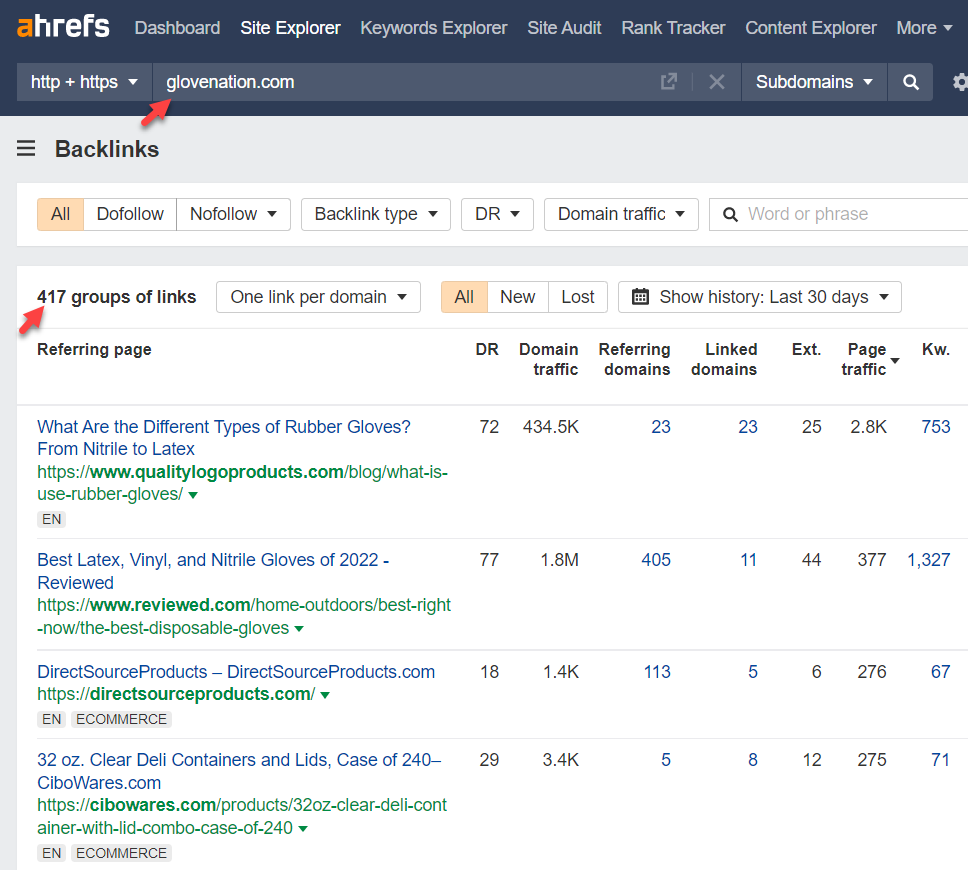
We then contacted any applicable websites with our link pitch to get them to link to us as well.
Guest Posting
Guest posting is probably the most commonly used link building tactic, and for good reason: it’s very easy.
Essentially you write a unique article for a related blog that contains a link to your website. And when the article is published, you now have a backlink from that blog back to your website.
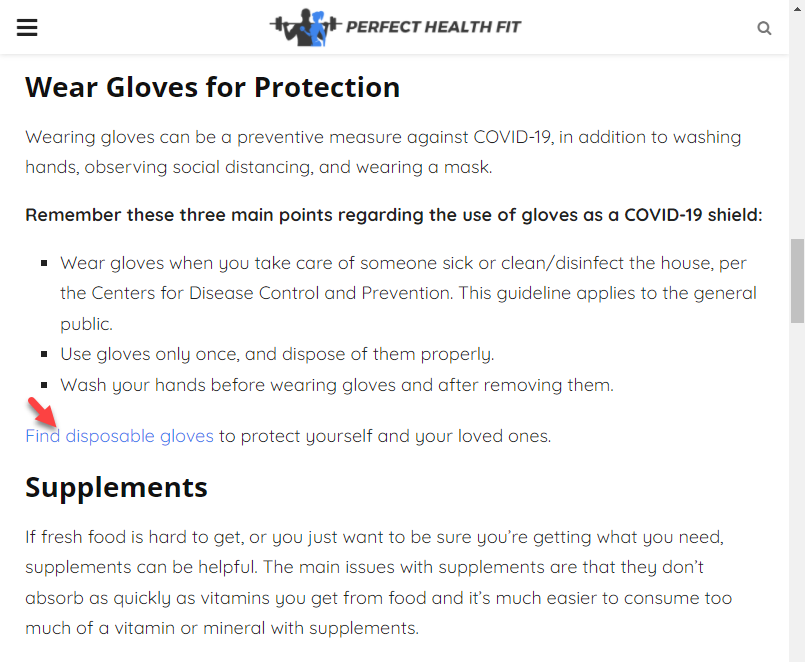
What’s great about guest posting is that since we’re writing the article, we have more control over the page the link points to. So it’s much easier to get backlinks directly to the pages that need them the most (category pages and product pages).
However anything that’s easy often get abused. So we always check for the following before pitching a guest post to the link prospect.
- Website is related to the client’s niche/industry/products
- Has a strong Domain Rating and at least 1,000 estimated visitors according to Ahrefs
- Doesn’t link out to typically shady industries (CBD, insurance, pharma, debt, etc)
- Has editorial guidelines in place
Discount Code Link Building
We created a few different discount codes for a few different professions.
- First responders
- Nurses
- Military
- Teachers
- etc.
Each of these professions had their own page that detailed and promoted their discount code.
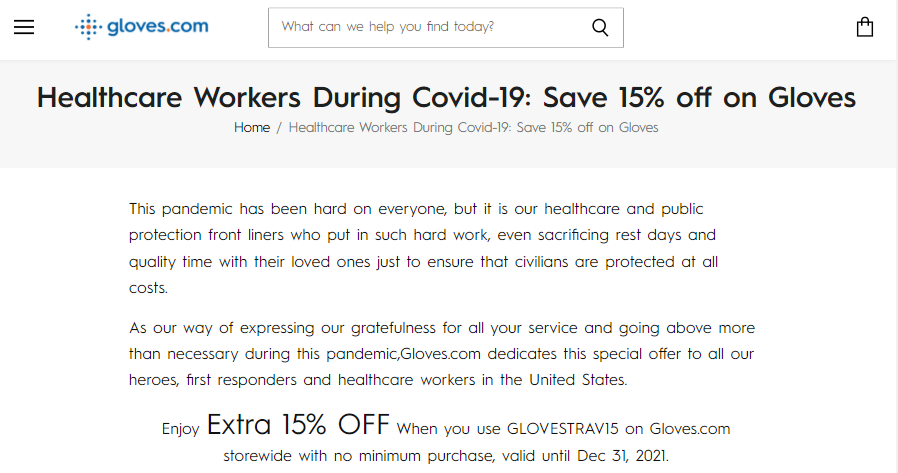
So where did the backlinks come from?
We then promoted these discount pages to a variety of blogs and online groups that were actively supporting these communities. Many of them were happy to promote our discount code which resulted in additional backlinks.
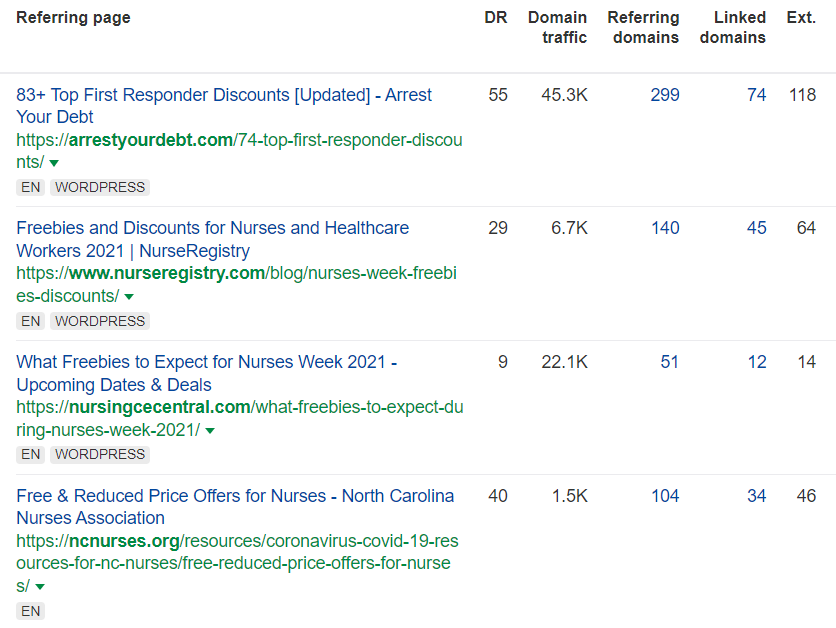
Scholarship Campaign
Universities are some of the most authoritative websites on the web, and a backlink from one of these websites can have a positive impact on SEO.
We worked with the client to offer a $1,000 scholarship to university students. We created a page with all the details and began promoting it to university financial aid departments.
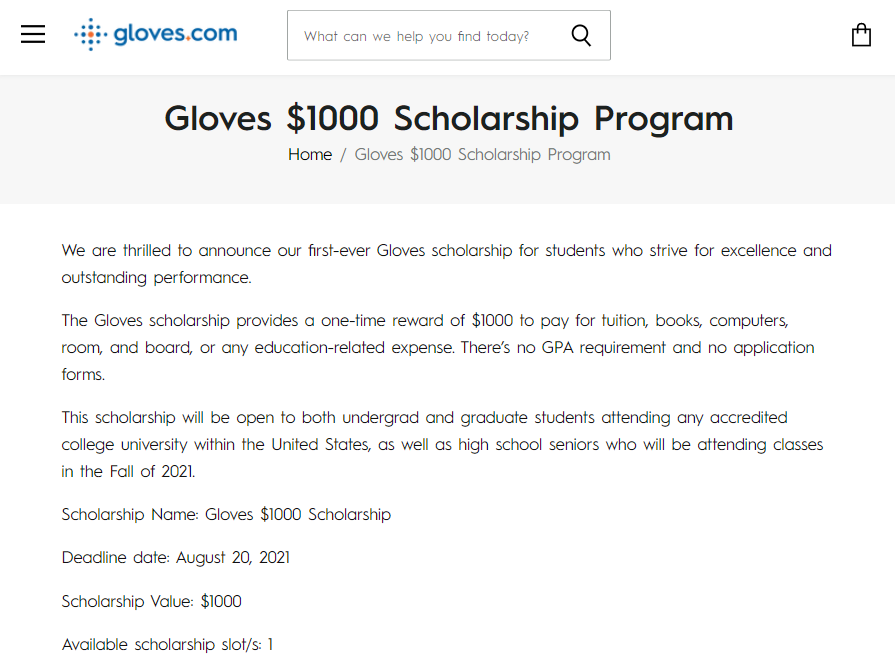
This resulted in a lot of backlinks from some very high-authority universities and other financial aid websites.
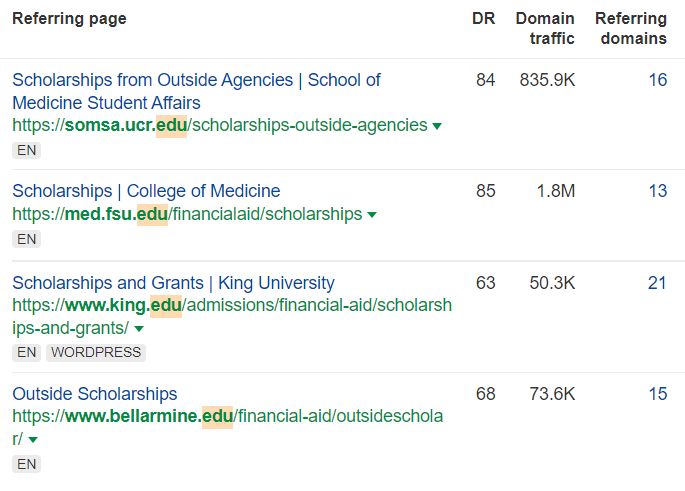
These university/financial aid sites don’t have much/any relevance so scholarship links alone probably won’t increase your rankings. However these .edu sites have lots of authority and trust signals which can have a positive impact on your link profile in conjunction with other, more relevant link building strategies.
Content Marketing
The last component of the link building strategy was content marketing. We created pieces of content that were likely to attract backlinks and then promoted them to relevant blogs and websites.
For example, our research showed that there were a lot of websites discussing and linking to senior-related safety topics. As such, we wanted to create a comprehensive guide that provided in-depth information on how to properly take care of seniors.
After extensive research and writing, the 2,000-word Basic Caregiving for Seniors article was published on Gloves.com website.
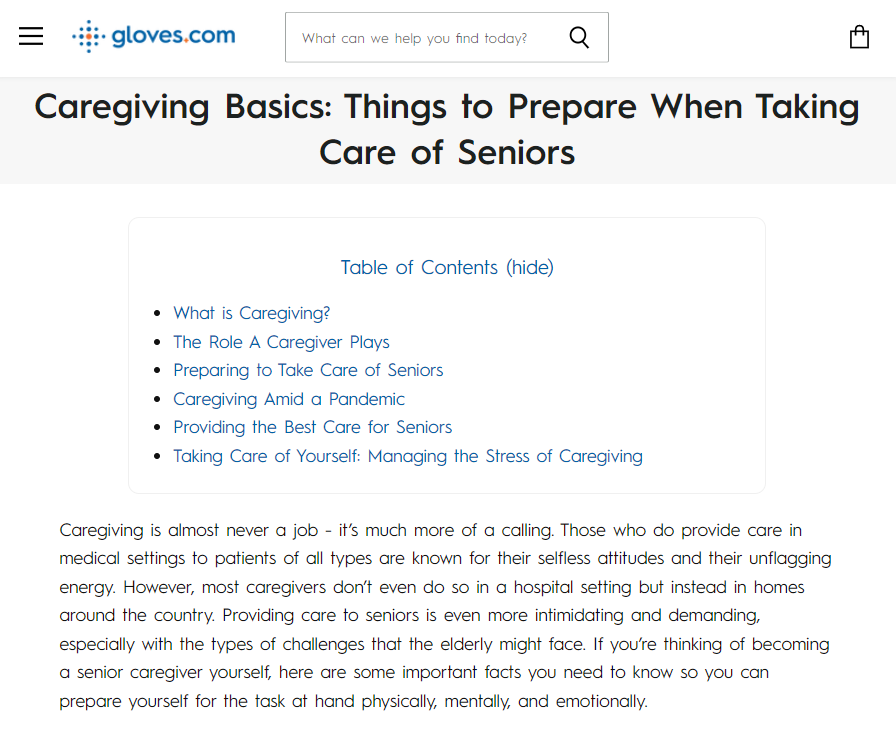
Our link building team began promoting the article to relevant websites and was able to acquire quite a few high-quality backlinks.
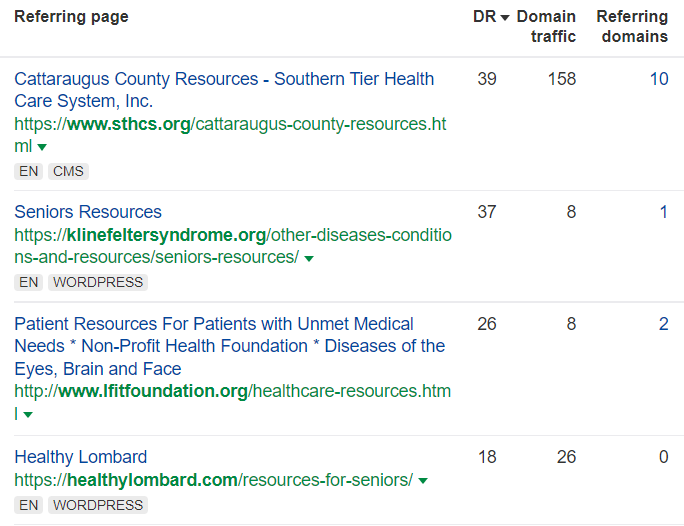
Link Building Summary
To date, our team has built 308 backlinks for Gloves.com since we first started in January 2021
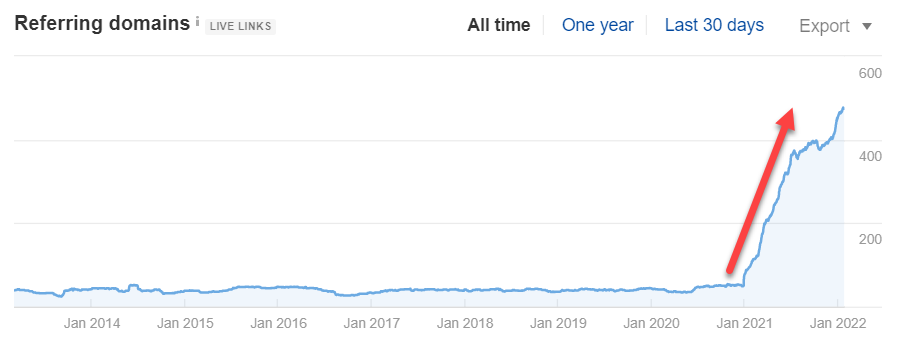
And as these backlinks came in, their Domain Rating also significantly increased which meant they could now rank for even more competitive keywords.
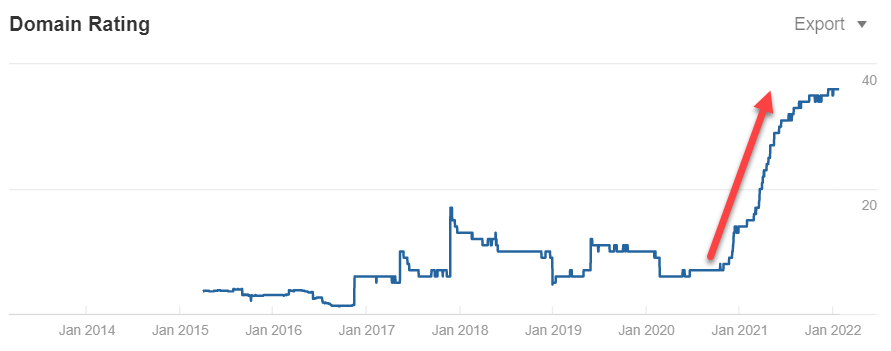
SEO Campaign Results
There was a lot of work that went into the SEO campaign, but what about the results?
After just 12 months, Gloves.com went from having only 3 keywords ranking on the first page of Google to having 3,531 keywords ranking on the first page of Google.
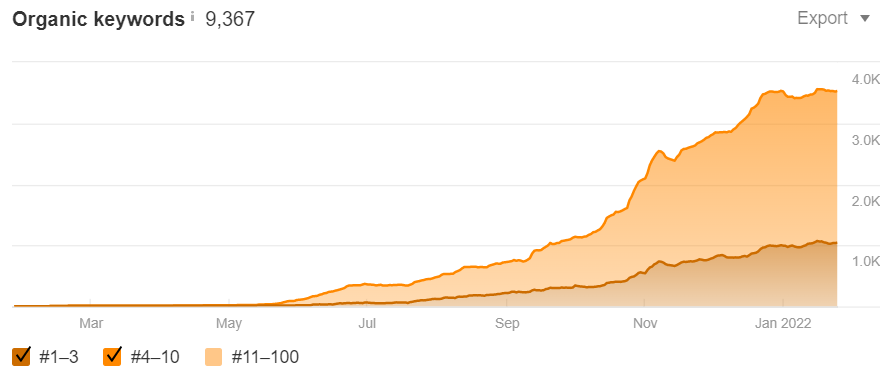
And as you saw from the first graph at the beginning of the case study, organic search traffic has also significantly increased.

We were also able to establish top positions for some of the most competitive keywords with 1,000’s of monthly searches, all within 1 year! This meant beating out massive retailers like Amazon, Walmart, Walgreens, and Home Depot.

“I think everyone wants that instant gratification—they can put up an ad and start seeing revenue from it. But SEO is completely different; you have to wait for that. I told myself, I’m going to give it at least six months. Luckily we started seeing results in month two, which was great, and we’ve just seen an upwards trend since.”
– Shakil Prasla, founder of Gloves.com

Key takeaways to improve your SEO
- Always do some due diligence upfront to ensure SEO is even worth investing in.
- Use keyword Research data to uncover which pages your website actually needs.
- Fix any technical issues that could be hurting SEO performance.
- Create educational content on topics that your customers are actually searching for.
- Most importantly, make sure you have enough backlinks to outrank your competitors.

 by
by 